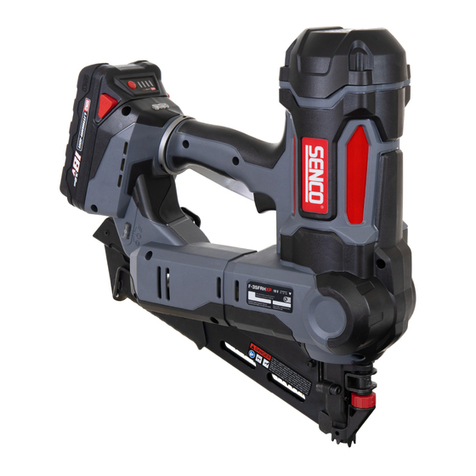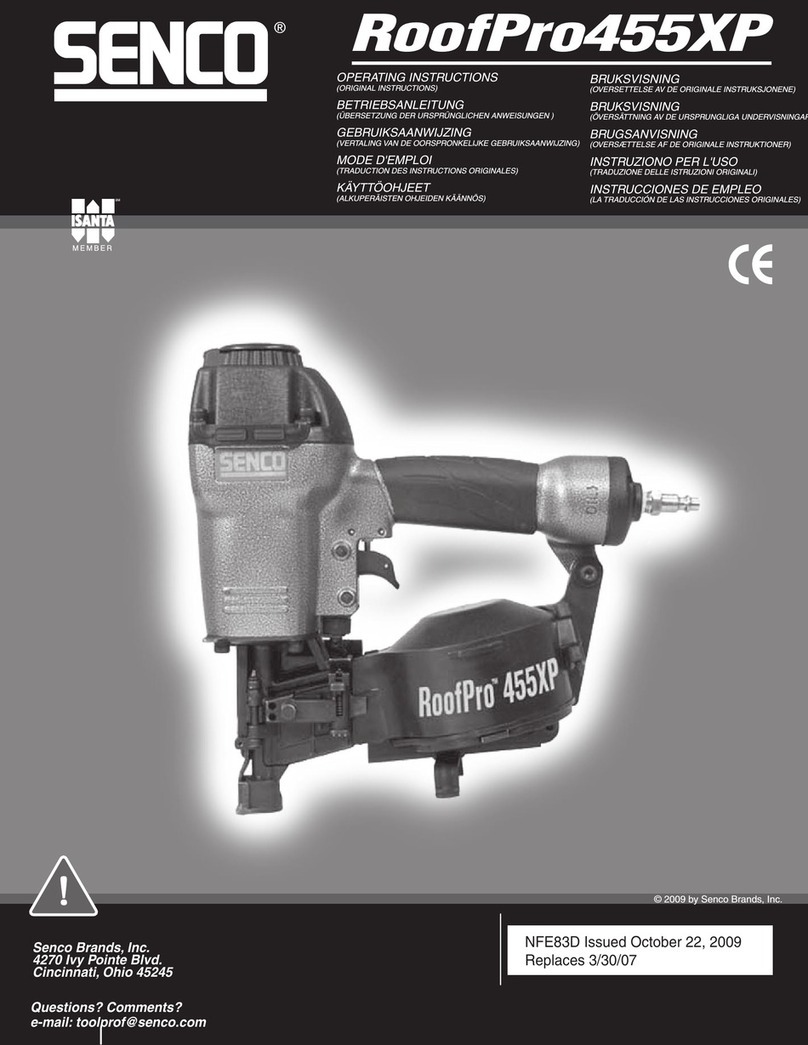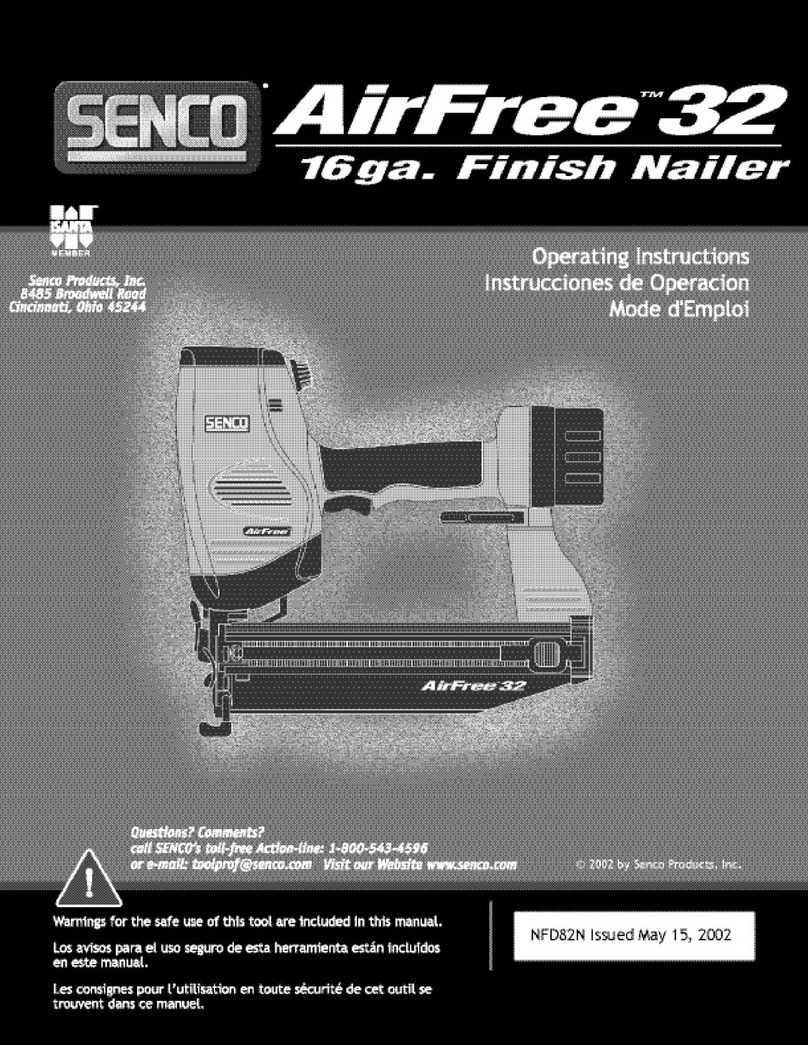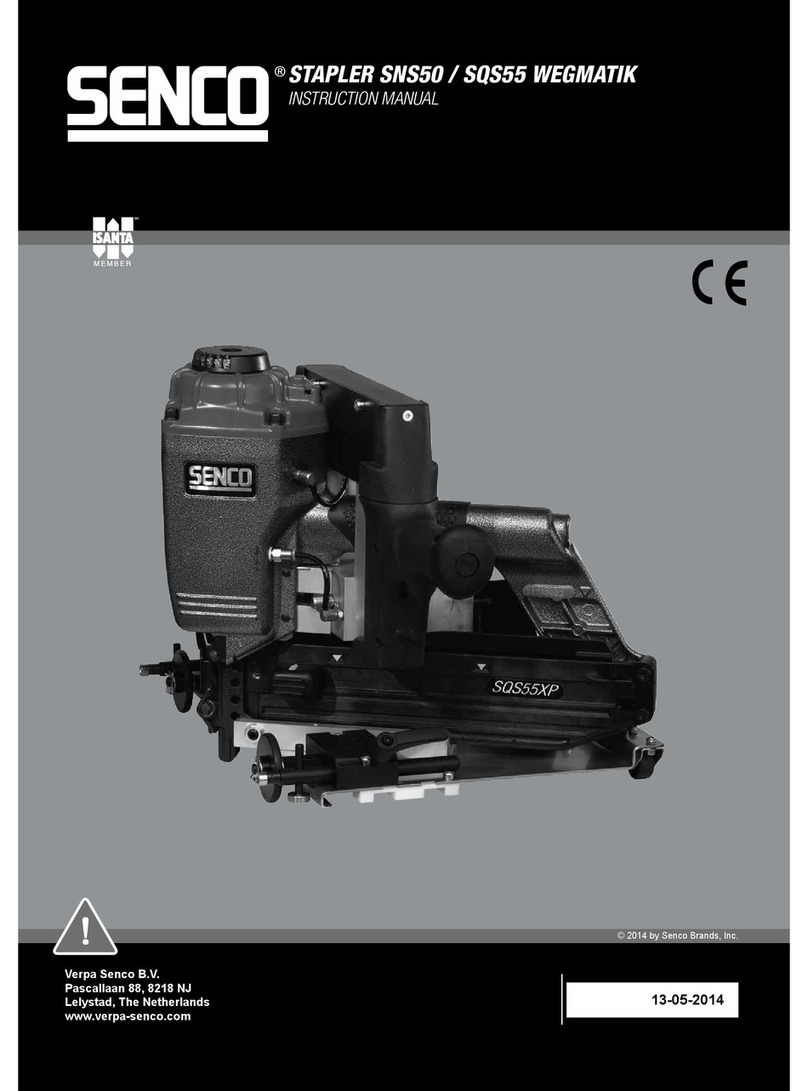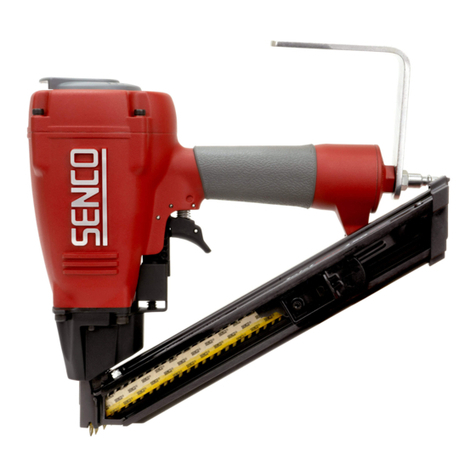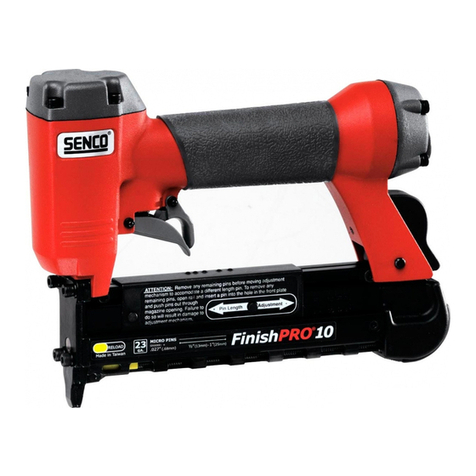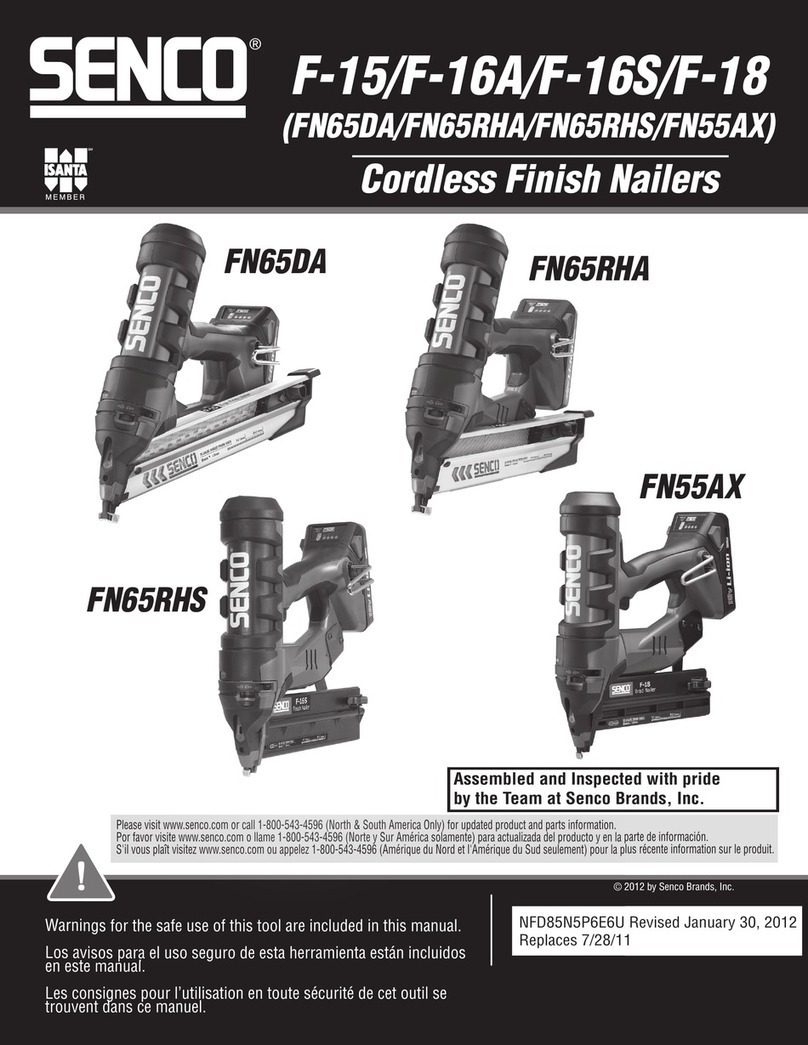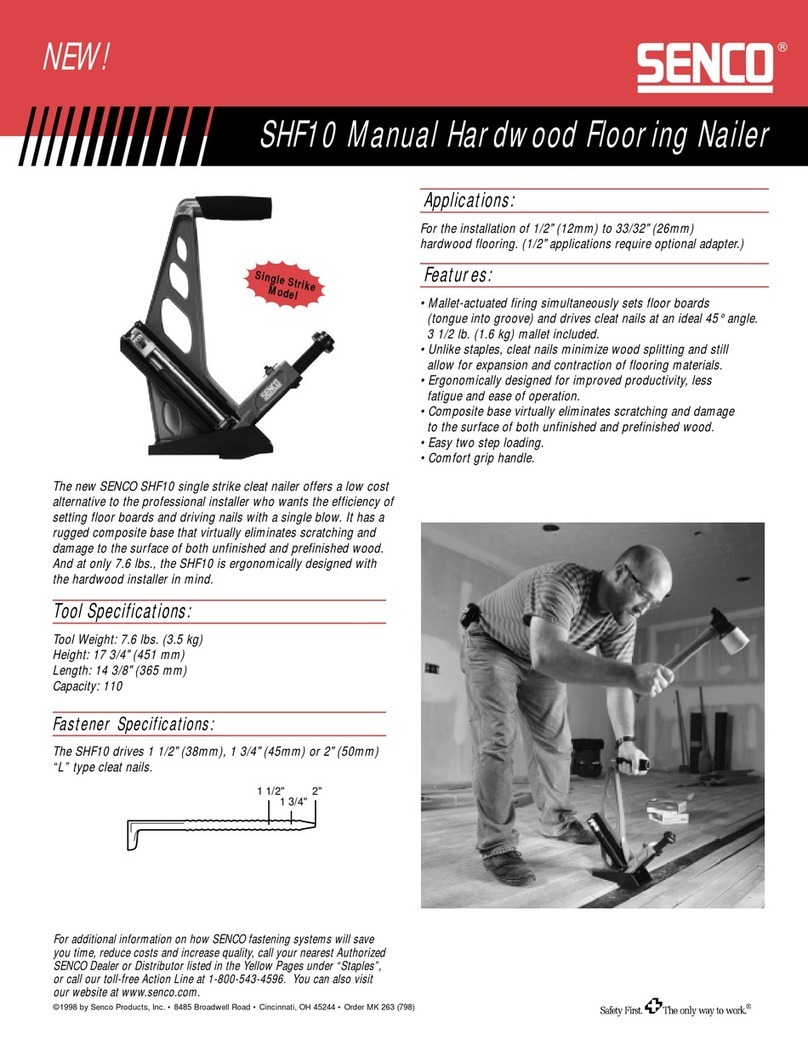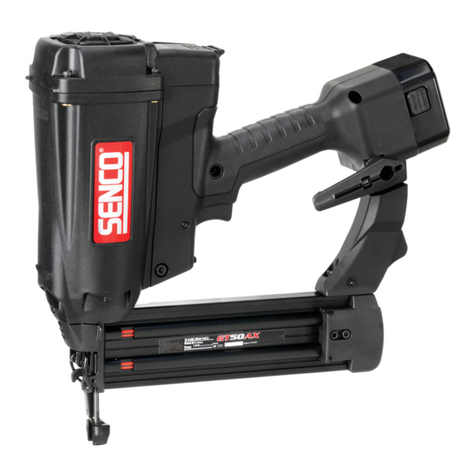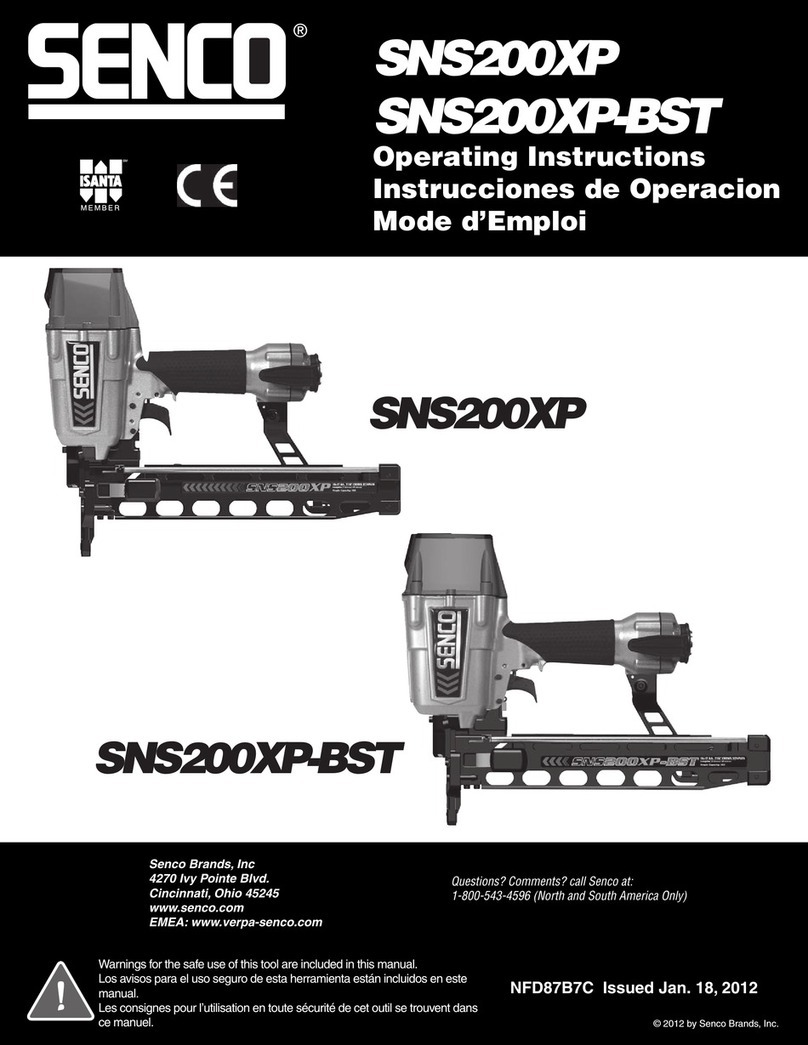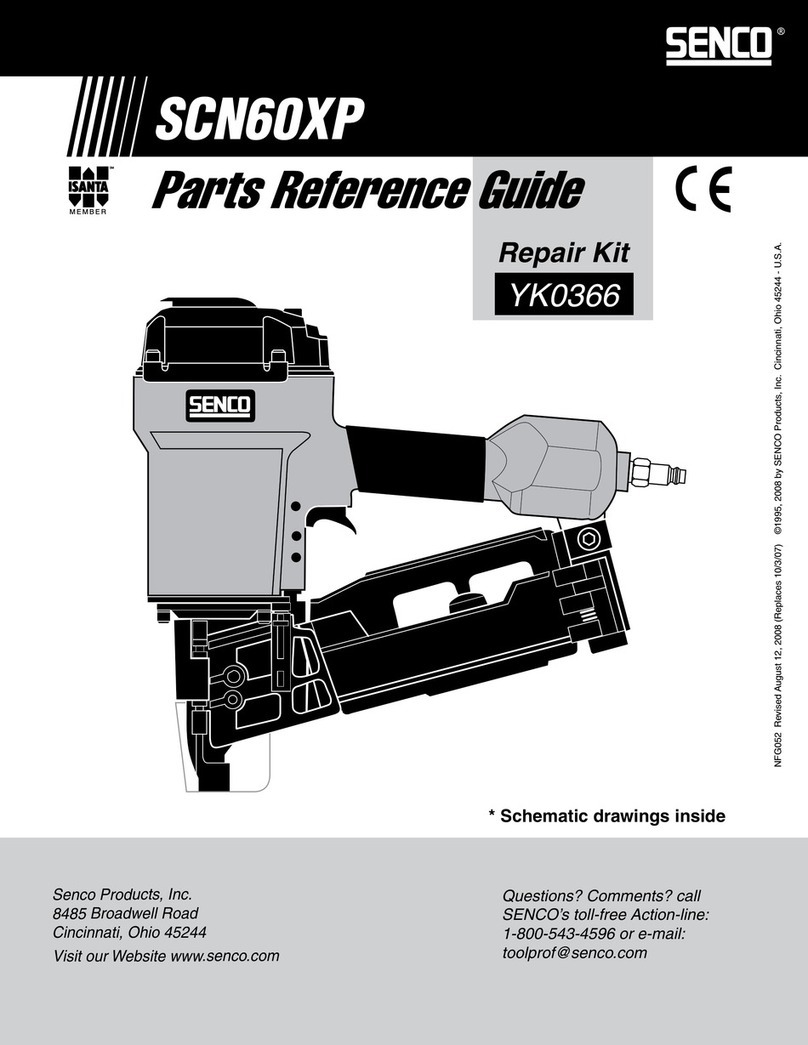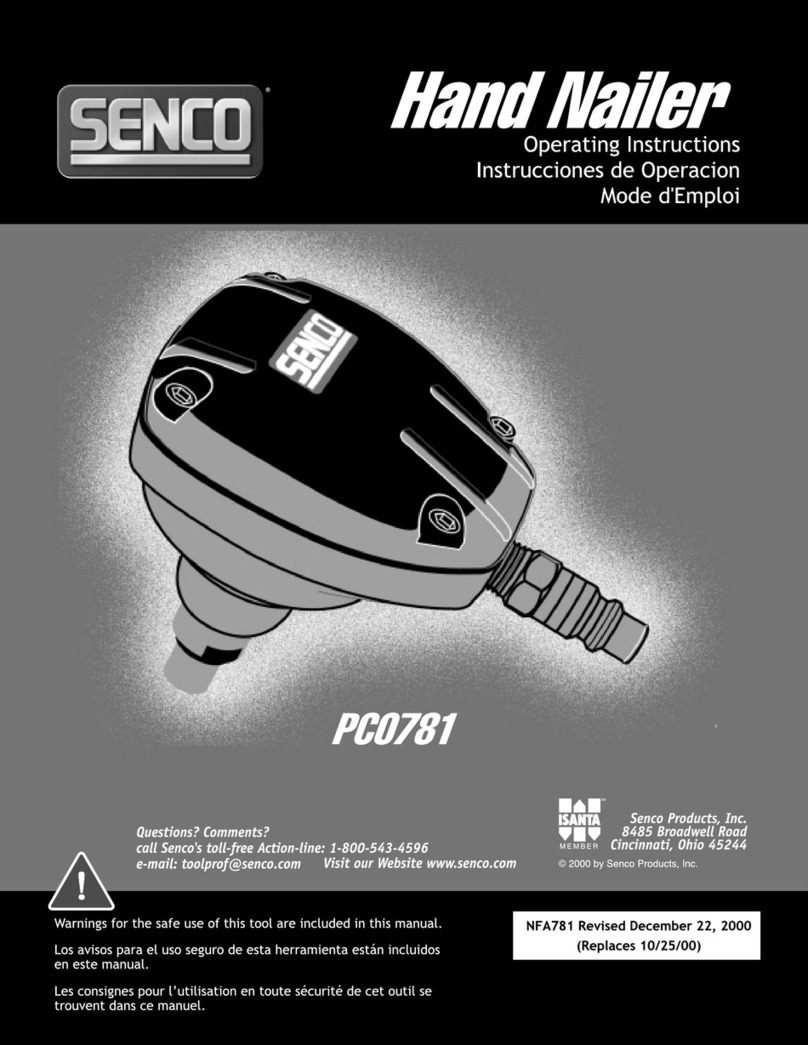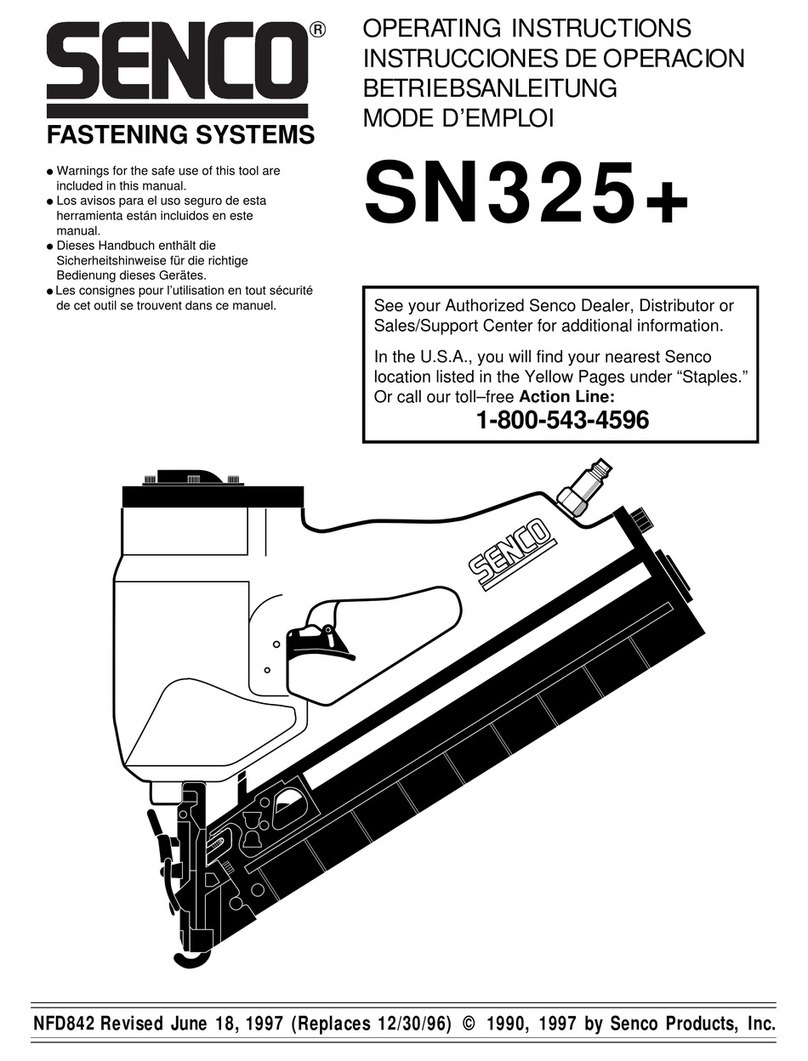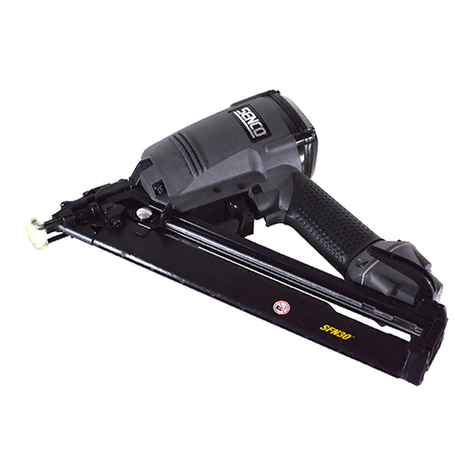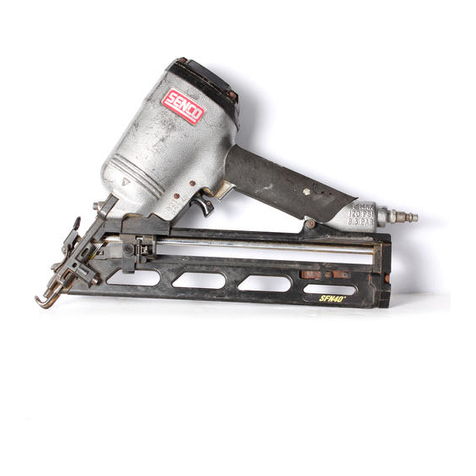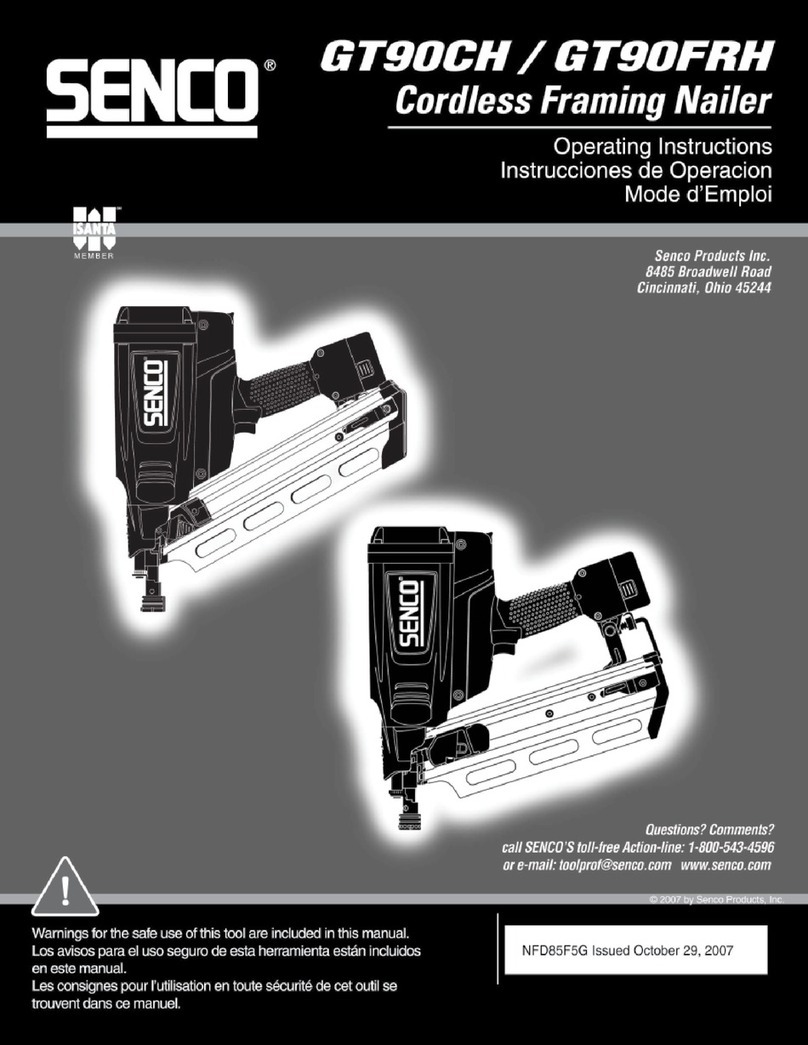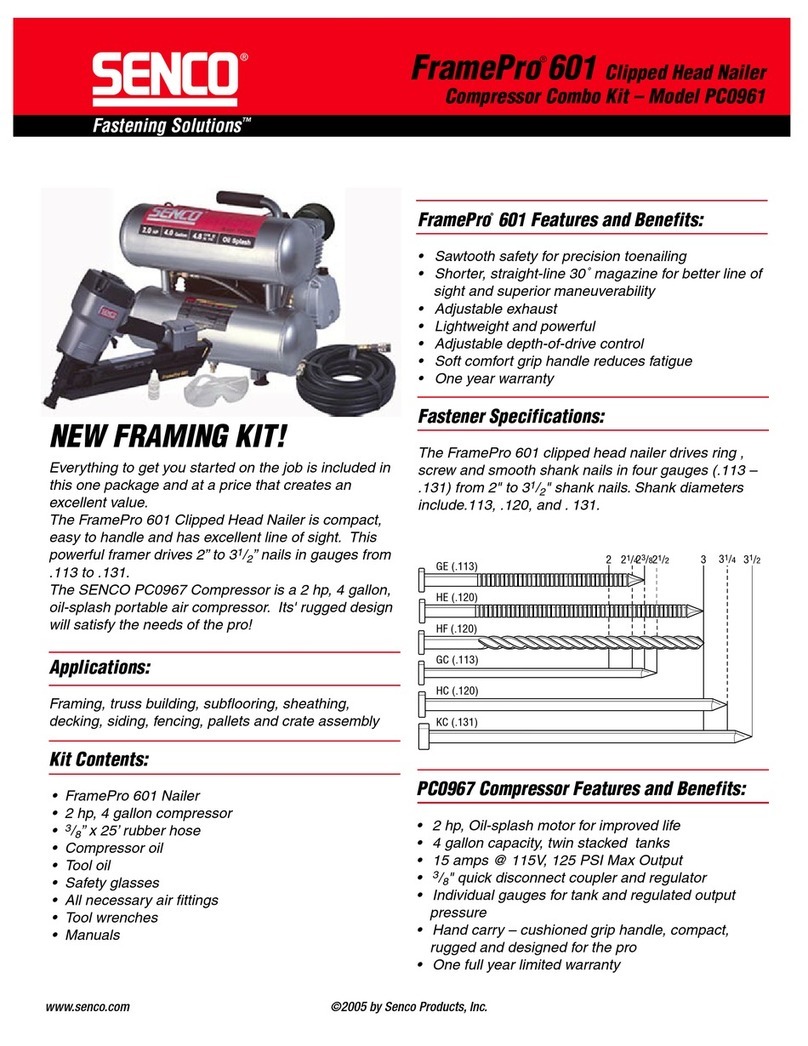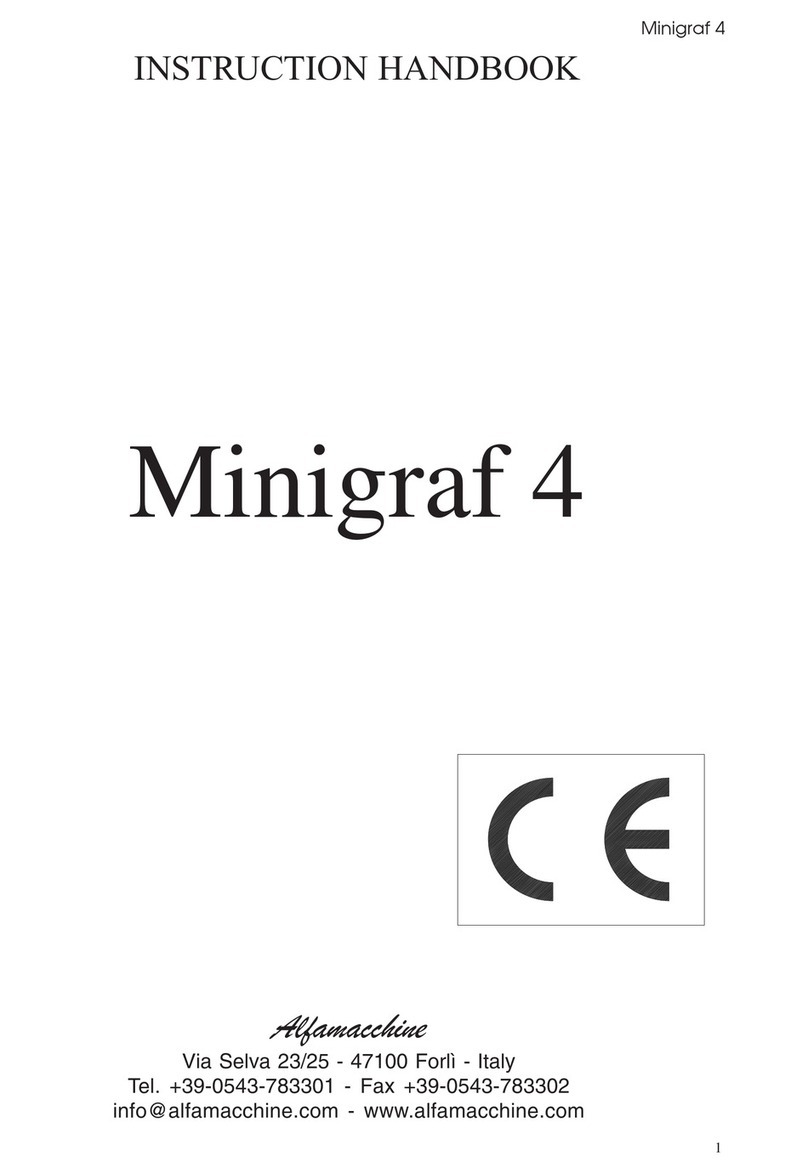
9
EN
• Use personal protective equipment. Always wear eye
protection. Protective equipment such as dust mask, non-skid safety
shoes, hard hat, or hearing protection used for appropriate conditions
will reduce personal injuries.
• Prevent unintentional starting. Ensure the switch is in the
o-position before connecting to power source and/or battery
pack, picking up or carrying the power tool. Carrying power tools
with your nger on the switch or energising power tools that have the
switch on invites accidents.
• Remove any adjusting key or wrench before turning the power
tool on. A wrench or a key left attached to a rotating part of the power
tool may result in personal injury.
• Do not overreach. Keep proper footing and balance at all times.
This enables better control of the power tool in unexpected situations.
• Dress properly. Do not wear loose clothing or jewellery. Keep
your hair, clothing and gloves away from moving parts. Loose
clothes, jewellery or long hair can be caught in moving parts.
• If devices are provided for the connection of dust extraction
and collection facilities, ensure these are connected and
properly used. Use of dust collection can reduce dust-related hazards.
3.4.5. Power tool use and care
• Do not force the power tool. Use the correct power tool for your
application.The correct power tool will do the job better and safer at
the rate for which it was designed.
• Do not use the power tool if the switch does not turn it on
and o. Any power tool that cannot be controlled with the switch is
dangerous and must be repaired.
• Disconnect the plug from the power source and/or the battery
pack from the power tool before making any adjustments,
changing accessories, or storing power tools. Such preventive
safety measures reduce the risk of starting the power tool accidentally.
• Store idle power tools out of the reach of children and do
not allow persons unfamiliar with the power tool or these
instructions to operate the power tool. Power tools are dangerous
in the hands of untrained users.
• Maintain power tools. Check for misalignment or binding of
moving parts, breakage of parts and any other condition that
may aect the power tool’s operation. If damaged, have the
power tool repaired before use. Many accidents are caused by
poorly maintained power tools.
• Keep cutting tools sharp and clean. Properly maintained cutting
tools with sharp cutting edges are less likely to bind and are easier to
control.
• Use the power tool, accessories and tool bits etc. in accordance
with these instructions, taking into account the working
conditions and the work to be performed. Use of the power tool
for operations dierent from those intended could result in a hazardous
situation.
3.4.6. Service
• Have your power tool serviced by a qualied repair person
using only identical replacement parts. This will ensure that the
safety of the power tool is maintained.
3.4.7. Tool safety
• Always assume that the power tool contains fasteners. Careless
handling of the tacker can result in unexpected ring of fasteners and
personal injury.
• Do not point the power tool towards yourself or anyone nearby.
Unexpected triggering will discharge the fastener causing an injury.
3.4.7.1. Before use
• Remove all fasteners from the tool before inserting the battery
and fuel cell.The tool may eject a fastener when the battery and fuel
cells are inserted.
• Never use the tool if the safety, trigger or springs have become
inoperable, missing or damaged. Do not tamper with or remove
safety element, trigger, or springs.
• Make sure all screws and caps are securely tightened at all
times. Make daily inspections for free movement of trigger and safety.
Never use the tool if parts are missing or damaged.
• Use only parts, fasteners, and accessories recommended or sold
by SENCO. Do not modify tool without authorization from SENCO.
• Do not use the power tool without warning label on power
tool. If a label is missing, damaged or unreadable, contact your SENCO
representative to obtain a new label at no cost.
3.4.7.2. During use
• Do not actuate the tool unless the tool is placed rmly against
the workpiece. If the tool is not in contact with the workpiece, the
fastener may be deected away from your target.
• Do not use this tool for fastening electrical cables. It is not
designed for electric cable installation and may damage the insulation
of electric cables thereby causing electric shock or re hazards.
• Drive fasteners into appropriate work surfaces only; never into
materials too hard to penetrate; materials too soft may allow
a fastener to drive through and exit the material. Do not actuate
the tool unless the tool is placed rmly against the workpiece.
• Do not drive fasteners close to the edge of the work surface.
The workpiece is likely to split and the fastener could y free or ricochet
and hit someone.
• Do not drive fasteners on top of other fasteners or with the
tool at too steep of an angle. The fastener could y free or ricochet
and hit someone.
• Never use any part of the tool (i.e., the cap or main body) as a
hammer. The tool may activate or become damaged and result in an
unsafe condition.
• Keep hands and other body parts away from the safety area of
tool to avoid possible injury during operation.
• When using tool, care should be taken due to possibility of tool
recoil after a fastener is driven. If safety is unintentionally allowed
to re-contact work surface following a recoil, an unwanted fastener
may be driven.Therefore, allow tool to recoil completely o work
surface after a fastener is driven to avoid this condition. Do not push
safety on work surface until a second fastener is desired.
• Disconnect the tool from the power source when the fastener
jams in the tool.While removing a jammed fastener, the tacker may
be accidentally activated if it is plugged in.
3.4.7.3. After use
• Do not perform any emergency repairs without proper tools
and equipment.The written approval of the tool manufacturer must
be obtained prior to making any modications to the tool.
• Remove the battery and fuel cell from the tool before doing
tool maintenance, clearing a jammed fastener, leaving work
area, moving tool to another location, or handing the tool to
another person.
• Use clamps or other practical ways to secure and support
the workpiece to a stable platform. Holding the work by hand
or against your body is unstable and may lead to loss of control and
personal injury.
• Use only non-ammable cleaning solutions. Do not soak. Such
solutions may damage O-rings and other tool parts.
